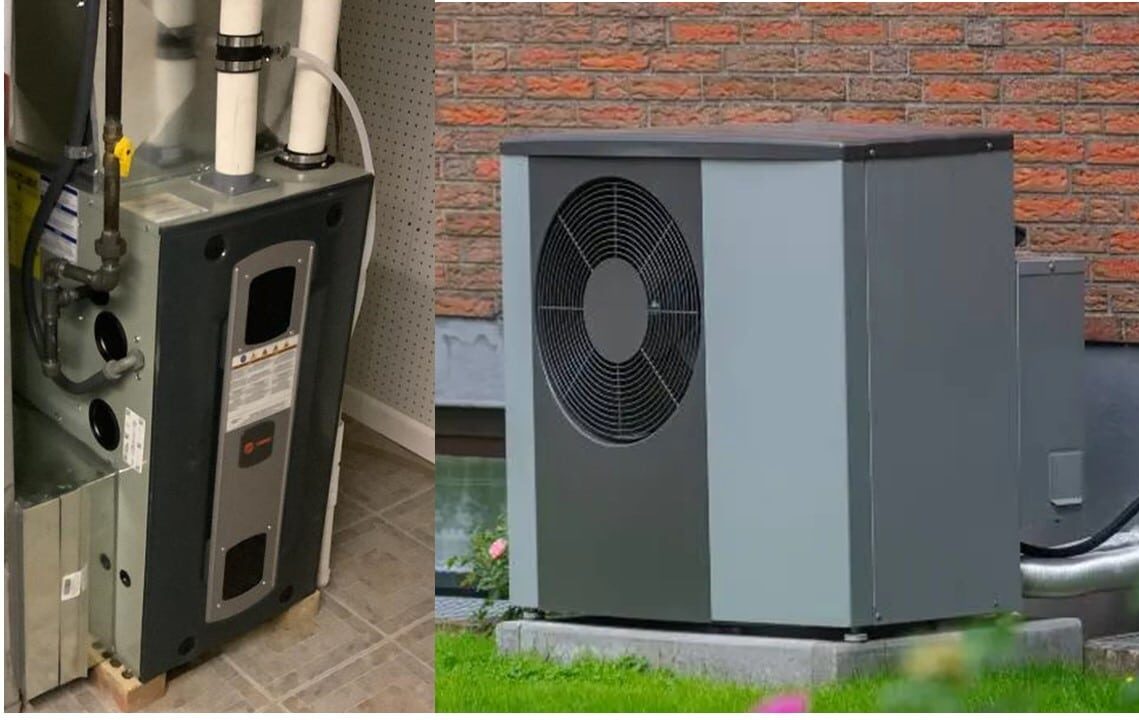The Energy Star Zero Energy Ready Homes (ZERH) program requirements for HVAC systems give us the choice of using gas or electric mechanical setups. Although many types of HVAC systems meet the requirements, we are going to focus on the most common systems used for the average new home, which are central-based HVAC systems with an air handler and ductwork. For gas systems, the furnace has to be at least 95% efficient, and the AC unit that goes with it must be a 16 SEER unit. For all-electric, the requirement is a heat pump HVAC system with a 9.5 HSPF 16 SEER rating.
Comparing HVAC Systems in ZERH Builds
Working with Blue Barn, we received many differing bids for the HVAC system. Needless to say, this part of the Zero Energy Ready Home build is the most difficult to compare. As of the writing of this article, the lowest bid for HVAC systems that meets ZERH requirements is for a 97% efficient natural gas furnace with a 16 SEER AC unit. The bid was about $5,000 cheaper than the closest heat pump bid.
This was expected since 94-98% efficient natural gas furnaces have been the norm for new HVAC system in Minnesota home builds and gas furnace replacements over the past 15 years. A 14 SEER AC unit is common, and the cost to upgrade to a 16 SEER unit is minimal, so quite often, there is no extra cost in bids for these upgraded AC units.
Evolving HVAC Systems in Zero Energy Ready Homes
The use of heat pumps or dual fuel units HVAC systems (which combine heat pumps with gas backup) is a relatively new concept in Minnesota and across the country. However, the rapid evolution of mechanical systems for homes, now firmly in the technology realm, promises a future of decreasing costs and increasing efficiency. The goal of these builds is to build the Energy Star Zero Energy Ready Home at the most cost-effective price point. Since the Twin Cities is a natural gas territory; the HVAC system so far will be a 97% efficient gas furnace with a matching 16 SEER AC unit.
Climate and Energy Sources
Deciding which system to use when building a zero energy ready home is heavily based on climate zones and energy sources. Minneapolis is climate zone 6, so it can get frigid around here for weeks during the winter, and it can be a subzero cold. We have access to natural gas, the least expensive option and cleanest for fossil fuels. Due to natural gas’s low cost (except when Texas freezes), the cost of running the 97% efficient gas furnace and a cold weather heat pump is very similar. CO2 output is also similar since Minnesota still has coal-fired power plants in the electricity mix.
If we didn’t have access to natural gas or lived in a warmer climate zone, the heat pump, even at the higher install cost, would be the clear winner. It would quickly offset the higher install cost with money saved in monthly energy bills. If the buyer of this ZERH home opts for the solar panel option, then the gas furnace vs. the heat pump will need to be revisited.
HVAC and the Bigger Picture of Energy Savings
Since the 97% gas furnace and 16 SEER AC units are commonly installed in new homes in Minnesota, there is no upgrade charge for the Energy Star Zero Energy Ready home builds, which leaves more money for the essential insulation upgrades required for the ZERH program.
The insulation upgrades will have a much longer and larger impact on these new ZERH homes than the current HVAC system. These upgrades, with their long-term sustainability benefits, are a key element of the new home build. With a really tight and well-insulated home, whatever HVAC system is used will take far less energy to run now and in the future.
